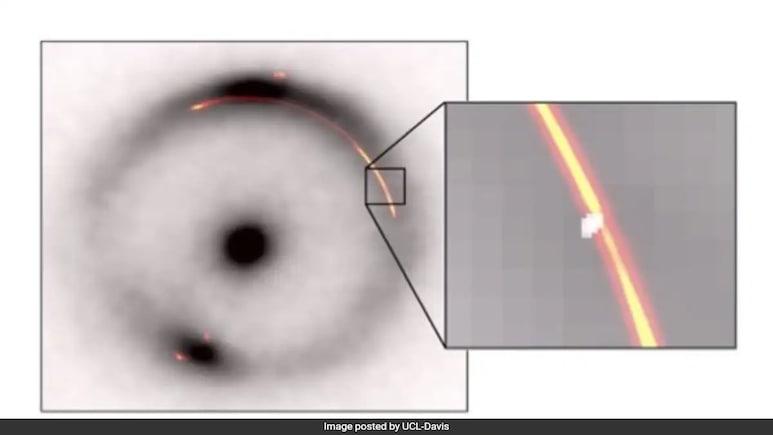
- A massive dark object with mass million times that of the sun was discovered over 10 billion light-years away
- The object emits no light and was detected through gravitational lensing of a more distant object
- It could be a small dark matter clump or a compact inactive dwarf galaxy much smaller than any known before
A groundbreaking study has revealed a massive, invisible dark object in space, which has a mass million times greater than the sun. Located over 10 billion light-years away, this enigmatic entity doesn't emit light, making it invisible to the naked eye. According to scientists, it could be a small clump of dark matter 100 times smaller than any previously detected or a compact, inactive dwarf galaxy. Researchers detailed their findings in two papers published in Nature Astronomy and Monthly Notices of the Royal Astronomical Society.
Since it doesn't emit light, scientists discovered it through gravitational lensing, where the dark matter's gravity bends the light of a more distant object. This ancient entity is seen as it existed when Earth was just 6.5 billion years old, offering a glimpse into the universe's past.
"It's an impressive achievement to detect such a low mass object at such a large distance from us," said Chris Fassnacht, professor in the Department of Physics and Astronomy at the University of California, Davis, who co-authored the study.
"Finding low-mass objects such as this one is critical for learning about the nature of dark matter," he added.
The newly discovered object is so small that it was detected by inducing a small pinch in the distorted image caused by a much larger object.
"Hunting for dark objects that do not seem to emit any light is clearly challenging. Since we can't see them directly, we instead use very distant galaxies as a backlight to look for their gravitational imprints," said lead author Devon Powell of the Max Planck Institute of Astrophysics in Garching, Germany.
How was the object discovered?
To detect the subtle signals of gravitational lensing, the team utilised a network of telescopes, including the Green Bank Telescope, Very Long Baseline Array, and European Very Long Baseline Interferometric Network, effectively creating an Earth-sized super-telescope. By correlating data from these instruments and employing advanced computational algorithms and supercomputers, they were able to capture the faint signs of the mysterious dark object's gravitational lensing effects.
"From the first high-resolution image, we immediately observed a narrowing in the gravitational arc, which is the tell-tale sign that we were onto something. Only another small clump of mass between us and the distant radio galaxy could cause this," said John McKean, of the University of Groningen of the Netherlands, who spearheaded the data collection.
The discovery of these clumps is significant because it sheds more light on dark matter, a mysterious substance that exists in space without emitting visible light. Dark matter might even predate the Big Bang, the cosmic event that marked the beginning of our universe 13.8 billion years ago, adding depth to our understanding of this enigmatic entity.
Track Latest News Live on NDTV.com and get news updates from India and around the world

